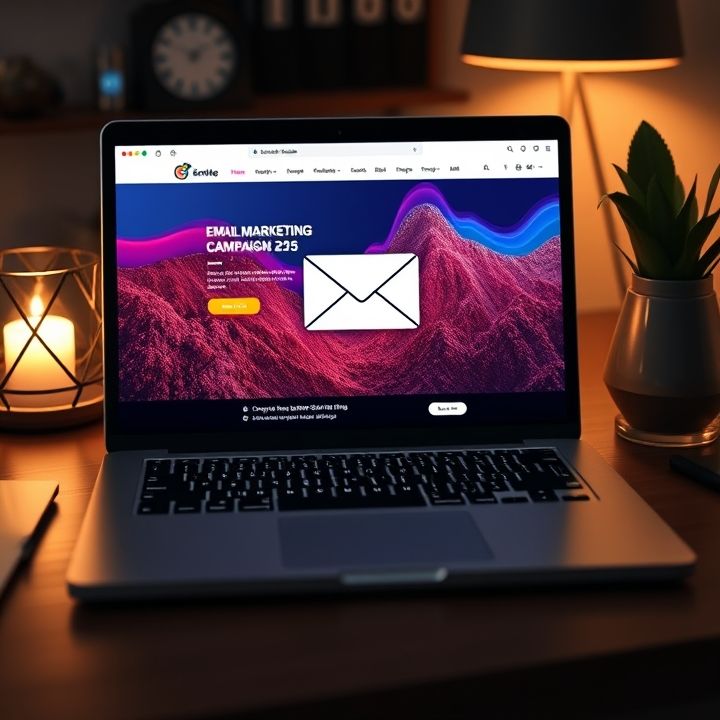Table of Contents
- Introduction
- Understanding Triggered and Transactional Emails: Definitions and Differences
- Crafting Personalized Welcome Emails to Increase Open Rates
- Utilizing Behavioral Triggers to Segment Customer Journeys
- Leveraging Abandoned Cart Emails to Recover Lost Sales
- Incorporating Cross-Sell and Up-Sell Opportunities in Order Confirmation Emails
- Conclusion
- Frequently Asked Questions
Introduction
In the dynamic world of digital marketing, standing out and capturing your audience’s attention requires creativity and strategy. Transactional emails, often overlooked in favor of flashy advertising methods, hold untapped potential to transform your customer engagement metrics. Imagine leveraging every email as a strategic touchpoint with your customers. Sounds intriguing, doesn’t it?
With an impressive open rate, transactional emails are like a digital goldmine waiting to be explored. Businesses have successfully transformed these emails into powerful tools that engage, inform, and convert recipients.
| Benefits of Transactional Emails | Impact |
|---|---|
| Personalized Communication | Enhances customer relationship |
| Timely Information | Increases customer trust |
| Higher Open Rates | Boosts visibility and engagement |
Explore how mastering the art of transactional emails can propel your business to new heights. Coupled with insightful strategies and innovative content, the possibilities are limitless. Leave no stone unturned as you delve into the transformative power of transactional emails, unlocking a realm of opportunities where your business and customers can thrive together.
Understanding Triggered and Transactional Emails: Definitions and Differences
Triggered and transactional emails are powerful tools in the realm of email marketing, yet they serve different purposes. Triggered emails are automated messages sent in response to specific actions or behaviors taken by customers. Examples include welcome emails, cart abandonment reminders, or anniversary emails. The primary goal of triggered emails is to engage customers by providing timely, relevant content based on their actions.
On the other hand, transactional emails are essential communications that accompany a user’s interaction with a brand. These are typically order confirmations, shipping notifications, or password reset emails. Transactional emails serve an essential role in maintaining customer satisfaction and trust, ensuring that customers are informed and up-to-date regarding their transactions or interactions.
While both types of emails aim to enhance customer experience, their key difference lies in their intent and timing. Triggered emails focus on engagement and personalization, often aiming to drive further action from the recipient. In contrast, transactional emails prioritize conveying necessary information to facilitate a seamless customer journey. Understanding these differences helps businesses effectively utilize email marketing to foster customer engagement and retention.
Crafting Personalized Welcome Emails to Increase Open Rates
Crafting personalized welcome emails is a crucial strategy for enhancing open rates and fostering strong customer relationships from the outset. A personalized welcome email can significantly increase engagement by making new subscribers feel valued and seen. First, use the recipient’s name in the subject line and opening greeting to grab their attention and create an immediate connection. Additionally, tailor the content to align with the user’s preferences and past behaviors if available. This approach not only demonstrates that you understand their needs but also encourages them to engage with your brand further. Furthermore, it’s beneficial to include a call-to-action that guides the subscriber towards a desirable action, such as exploring the website, following social media channels, or completing their user profile for more tailored experiences. Including an incentive, like a discount or exclusive content, can enhance the email’s appeal. Also, ensure the design is visually appealing and mobile-friendly to cater to users’ preferences for reading emails on various devices. In essence, the key to successful personalized welcome emails lies in making the recipient feel special and building a foundation for a lasting relationship with your brand.
Utilizing Behavioral Triggers to Segment Customer Journeys
Utilizing behavioral triggers to segment customer journeys is a strategic approach to enhance email marketing efforts. Triggered emails, which are sent automatically based on specific user actions or behaviors, allow businesses to create more personalized and relevant content for their audience. By analyzing customer behavior, such as browsing history, purchase patterns, and engagement metrics, companies can develop finely-tuned segments that cater to distinct customer needs and preferences. This segmentation enables marketers to craft messages that resonate more deeply with each group, leading to increased open rates, click-through rates, and ultimately, conversions.
For instance, a customer who frequently browses electronics but hasn’t made a purchase might receive a targeted email showcasing the latest gadgets or offering a limited-time discount on selected products. Meanwhile, a loyal customer could receive a personalized thank-you message with an exclusive deal. By leveraging these behavioral triggers, brands not only foster stronger relationships with their customers but also create opportunities for upselling and cross-selling. As a result, businesses can drive engagement, enhance customer loyalty, and improve retention in a highly competitive market.
Leveraging Abandoned Cart Emails to Recover Lost Sales
Abandoned cart emails are a powerful tool for recovering lost sales and engaging customers. These emails are triggered when a shopper adds items to their online shopping cart but leaves the site without completing the purchase. By sending a reminder email, businesses have a chance to re-engage the customer and encourage them to finalize their order. Personalization is key to the effectiveness of abandoned cart emails. Including details like the product name, image, and a direct link to complete the transaction can significantly increase conversion rates.
Timing also plays a crucial role; sending the first reminder within an hour of cart abandonment can catch the customer while the purchase is still on their mind. Follow-up emails can be spaced out over the next 24-48 hours, offering exclusive discounts or free shipping as incentives. Additionally, leveraging customer reviews and adding urgency with limited-time offers can further entice the shopper to complete their purchase.
Moreover, testing different subject lines, email designs, and calls-to-action can provide insights into what resonates best with your audience. By continuously optimizing abandoned cart emails, businesses can effectively recover lost revenue and boost customer retention.
Incorporating Cross-Sell and Up-Sell Opportunities in Order Confirmation Emails
Order confirmation emails provide a prime opportunity for businesses to incorporate cross-sell and up-sell strategies, driving additional customer engagement and enhancing revenue streams. These emails are opened more frequently than typical marketing emails, making them an ideal channel for persuasive content.
To successfully integrate cross-sell options, suggest complementary products that enhance the initial purchase. For instance, if a customer buys a camera, offer lenses or a camera bag. This approach helps to meet customers’ needs while increasing the order value.
Up-sell opportunities can also be seamlessly included in order confirmation emails. Highlight products that offer better features or more value than the purchased item, ensuring that suggestions are relevant to the customer’s interest. Personalization plays a critical role in this strategy; tailoring recommendations based on the customer’s browsing history or previous purchases can significantly boost engagement.
Moreover, include visually attractive and concise calls-to-action (CTAs) within the email to guide customers toward completing additional purchases. Incentives like discounts on recommended products can also be employed to entice customers.
By leveraging these strategies, businesses can transform simple confirmation emails into powerful tools for increasing customer engagement and retention.
Conclusion
Transactional and triggered emails have become indispensable components of effective email marketing strategies. By deeply understanding their roles and differences, businesses can craft personalized and timely messages that significantly enhance customer engagement and retention. Personalized welcome emails lay the groundwork for strong customer relationships from the outset, while behavioral triggers allow for sophisticated segmentation of customer journeys. Abandoned cart emails are crucial for recovering lost sales, and incorporating cross-sell and up-sell opportunities in order confirmations can further boost revenue streams. These strategic approaches not only nurture customer trust but also drive conversions and loyalty.
Ultimately, leveraging these email types effectively requires careful attention to content personalization, timing, and visually appealing design, supplemented by A/B testing to optimize performance. By integrating these strategies, companies can transform their email communications into powerful tools for skyrocketing customer engagement and driving sustained business growth. As the landscape of digital marketing continues to evolve, those who master the art of transactional and triggered emails will likely find themselves at the forefront of customer-centric innovation.

